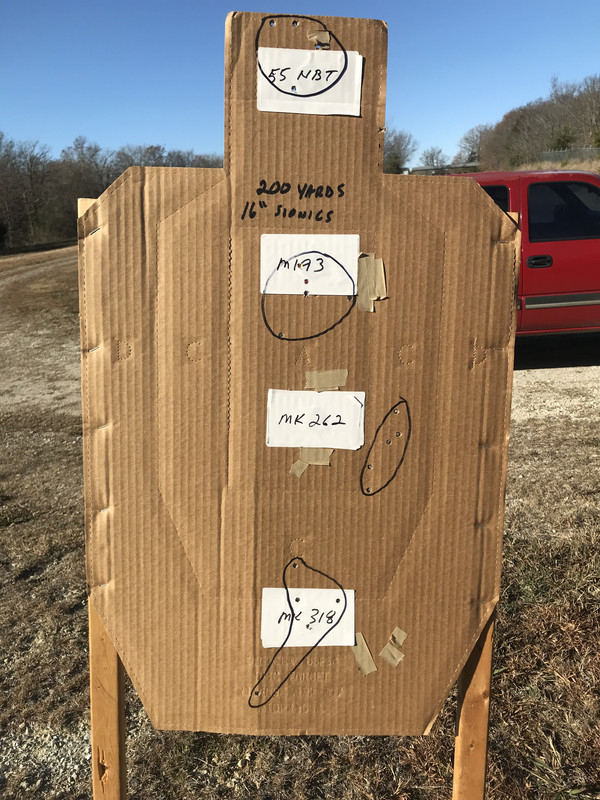So thinking about different ammo and Iíve always been able to get by with M193 as a cheap substitute for practice, I decided to see just how close everything is.
Started off with my 16Ē Sionics pencil barreled gun with the Trijicon Accupower 1-4 with the segmented circle reticle. Itís zeroed for my hunting reloads consisting of a Nosler 55 grain ballistic tip at 3100 FPS with TAC. I put the dot on top of the top white label and fired 5 shots. Not really shooting for groups just shooting as soon as the dot came back on target. This was at 200 yards and I aimed high because it is zeroed at 100 yards.
Then I shot IMI M193 at the second label in the center not thinking about the 100 yard zero.
The third was my 77 grain MK262 clone again center of the label.
The fourth was my 62 grain MK 318 clone, I knew I pulled the low shot.

The only load that was really off is the MK 262 about 2Ē right. I thought maybe I had my head not centered or who knows what so I shot another 5 shots on a different target with the same results.

Everything was about 1.5 moa and thatís all I expect from this gun and my shooting. Not bad for a chrome lined pencil barrel at 200 yards with a 1-4 scope.







 Reply With Quote
Reply With Quote

 version of what I was talking about before. It will help you zero your carbine to the fall of gravity at 200+ yards if your optic has vertical and horizontal stadia. Also great for checking your BDC or generating DOPE at longer ranges.
version of what I was talking about before. It will help you zero your carbine to the fall of gravity at 200+ yards if your optic has vertical and horizontal stadia. Also great for checking your BDC or generating DOPE at longer ranges. 